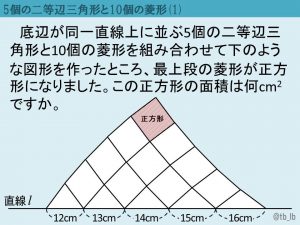Category Archives: Math Software
Exploring Multiples on a Dynamic Number Grid
What would it take to build a better number grid for young learners? A typical number grid contains 10 columns with the numbers progressing from 1-10, 11-20, 21-30 and so on, from row to row. We decided to upend this tradition and make a dynamic number grid with Web Sketchpad that allows students to … Continue Reading ››
Digging Deep Into Varignon’s Theorem
In the interactive Web Sketchpad model below (and here), ABCD is an arbitrary quadrilateral whose midpoints form quadrilateral EFGH. Drag any vertex of ABCD. What do you notice about EFGH?
The midpoint quadrilateral theorem, attributed to the French mathematician Pierre Varignon, is relatively new in the canon of geometry theorems, dating to 1731. Mathematics educator Chris Pritchard says … Continue Reading ››
Function Dances at NCTM
At the 2017 NCTM Annual Meeting I was invited to do a short Wednesday-afternoon presentation on Function Dances in the NCTM Networking Lounge. (Here's the handout from the presentation.)
The idea of function dances is to get students (or in this case teachers) moving around, acting as the independent and dependent … Continue Reading ››
Revisiting the Isosceles Triangle Challenge
In my last post, I presented a lovely geometry problem from Japan that was ideally suited to a dynamic geometry approach. Below is a new problem whose construction is nearly identical to the original one. The text says, "Five isosceles triangles have their bases on one line, and there are 10 rhombi. One length of the rhombus … Continue Reading ››
A Geometry Challenge from Japan
Here is a wonderful geometry problem from Japan: The five triangles below are all isosceles. The quadrilaterals are all rhombi. The shaded quadrilateral is a square. What is the area of the square?
I wondered at first whether the English translation of the problem was correct because with so many side … Continue Reading ››
Creating Animated Factorization Diagrams
Last year, I had the pleasure of co-organizing a geometry-focused coaching collaborative led by Metamorphosis, a New York-based organization that offers professional content coaching to transform the mindset and practices of teachers and administrators. I had so much fun that I decided to do it again! My workshop partners were Metamorphosis staffers Toni Cameron, Ariel Dlugasch, and … Continue Reading ››
Stars, Polygons, and Multiples
I've always found my collaborations with teachers to be a great inspiration for curriculum development, and that was especially true of my work with Wendy Lovetro, an elementary-school teacher in Brooklyn, NY. Wendy coordinated an after-school math club at her school, and I used the setting as an opportunity to develop and field test Sketchpad activities for the … Continue Reading ››
Raz’s Magic Multiplying Machine
Here is a question you don't hear very often: What does it feel like to experience multiplication in our bodies? It's a strange question because our typical exposure to multiplication is numerical. I give you two numbers—say, 3 and 5—and you tell me their product, 15. But multiplication need need not be so static and concrete.
Back … Continue Reading ››
Pythagoras Plugged In
The title of this post is a nod to the Sketchpad activity module Pythagoras Plugged In by Dan Bennett. Dan's book contains 18 visual, interactive proofs of the Pythagorean Theorem. And there are more: The Pythagorean Proposition, published in 1928 by Elisha Scott Loomis, contains over 350 proofs, 255 of which are geometric. Wow!
I revisited the … Continue Reading ››
